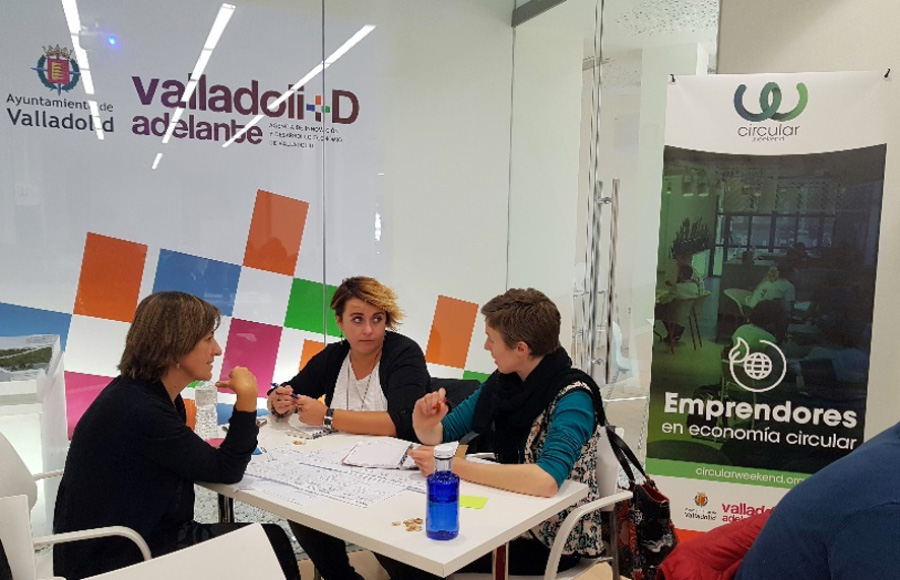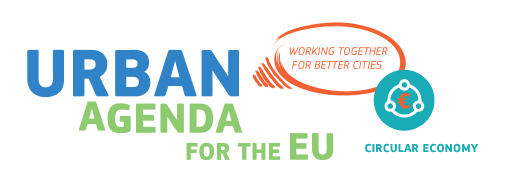Designing a funding programme
A successful circular funding programme starts with a focused and tailored programme design. When designing a funding programme for your city, certain aspects require specific attention. First, the programme design needs to be aligned with the city’s circular vision and strategy, and respond to the funding needs of local circular actors. Second, a programme can consist of various instruments that have to be selected carefully. Third, it must be decided whether to fund the programme solely on a city’s own budget or to also include external funding sources. Finally, the programme owner must make sure that the programme is in line with European State Aid regulations.
Matching programme objectives with city needs and potential
The envisioned circular transition can be supported effectively only if the programme’s objectives are properly aligned with the circular needs and potential of the city. To identify these, a city may first develop a circular scan ![]() to identify material streams and opportunities to improve the city’s performance. A circular strategy or roadmap can be a second step towards setting the course for the circular transition. Examples of cities with effectively formulated roadmaps are:
to identify material streams and opportunities to improve the city’s performance. A circular strategy or roadmap can be a second step towards setting the course for the circular transition. Examples of cities with effectively formulated roadmaps are:
Programme owners should involve key stakeholders in the development phase of the programme. While this may be time-consuming, it will create commitment and ensure that the instruments are tailored to local needs. Involving stakeholders can be done in different ways: the Flemish programme Circular Flanders, for example, involves sector representatives in the decision-making process, through their participation in a dedicated board. The city of Amsterdam, on the other hand, uses the concept of the Doughnut Economy in workshops to solicit input from citizens and local businesses. Read more on co-designing a funding programme here.
Matching programme instruments with project types and funding needs
After formulating the programme objectives, the city must identify funding or financing instruments that match the needs of the targeted project types. At first, the programme owner has to decide on the type of funding and financing:
- Debt instrument
- Equity instrument
- Guarantee instrument
- Grant or subsidy
- Alternative funding instrument
In order to select an appropriate instrument or mix of instruments, the programme owner must understand the development stage and risk profile of the targeted project types, considering, for example, the business model, available collateral, market risks, technical risks and revenue streams. The funding applicability table can help programme owners in the identification of the most appropriate instrument.
The programme owner has to estimate the applicable project size range, the funding rate, and the project duration. These estimates are very context- and sector-dependent. It can be relevant at this stage to consult technical experts to get a better understanding of the risks and funding needs in the targeted sectors and for the different project types. It may also be relevant in this phase to check State Aid regulations and involve legal experts.
The transition towards a circular economy is complex and involves many different sectors and types of projects. The funding needs can vary a lot as projects may be at different stages of development and with varying risk profiles and degrees of innovation. In order to diversify a funding programme, the programme owner may want to target various types of projects with varying characteristics and risk profiles. BeCircular, the circular programme of the Brussels Capital Region, is a great example of how different instruments are used to cover a range of different project types. Read more on combining funding instruments in one programme here.
Matching internal and external funding sources
If the city primarily wants to support its own objectives, the most straightforward approach is to provide funding from the city’s own budget. Full programme ownership and control allows a larger degree of flexibility when it comes to project selection, since decisions can be taken by the city representatives responsible for specific sectors. Funding an effective programme can require extensive budgets and perhaps be too burdensome for city authorities that have financial constraints. Full programme ownership also limits the possibilities for collaboration with other circular funders. Cities can find financial support for their programmes by levering external funding sources. Glasgow and London, have used European Regional Development Funds (ERDF) to finance circular transition programmes. Read more on using ERDF-funding here.
State aid regulation
When designing a funding programme, it is important to keep in mind the regulatory framework that governs public funding and support programmes, especially when State Aid considerations are involved. State Aid may give receiving companies and organisations an advantage over competitors and is therefore prohibited. However, a government can use the notification procedure to receive approval from the European Commission beforehand. In case of genuine market failure, the EC can allow aid, e.g. if the aid is still is deemed justified as the best way to address a market failure, has an incentive effect to change the organisation’s behaviour, or outweighs any negative effects on competition. In order to facilitate the funding in specific situations where policy objectives for State aid can be considered compatible, the EC has developed certain rules and exemptions ![]() :
:
- De minimis regulation
 , allows aid which amounts up to EUR 200,000 over a three-year period per undertaking.
, allows aid which amounts up to EUR 200,000 over a three-year period per undertaking. - The General Block Exemption Regulation (GBER)
 , declaring certain categories of aid compatible with the internal market, for instance environmental protection, SMEs, research, development and innovation, broadband infrastructure, and regional initiatives. Such categories would be exempt from formal notification in order to simplify the State Aid process, if the specific criteria of the GBER are met.
, declaring certain categories of aid compatible with the internal market, for instance environmental protection, SMEs, research, development and innovation, broadband infrastructure, and regional initiatives. Such categories would be exempt from formal notification in order to simplify the State Aid process, if the specific criteria of the GBER are met. - Pre-existing EC approved national schemes can grant legal aid in specific instances (these should be consulted at a national level).
If an exemption is applicable the government prior notification is not required.






